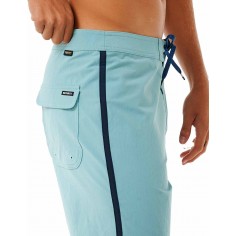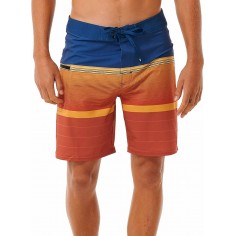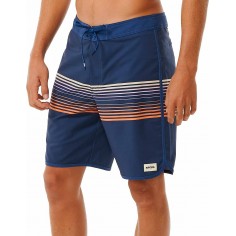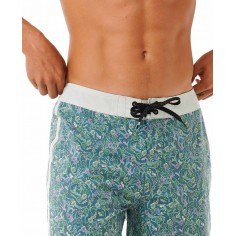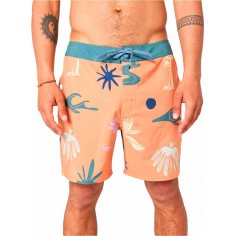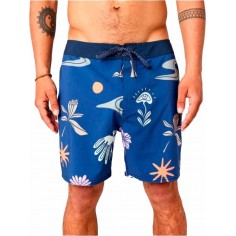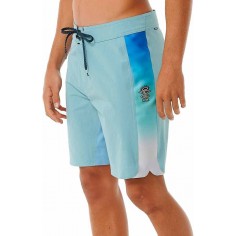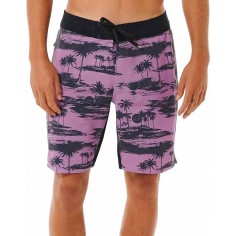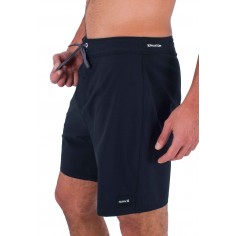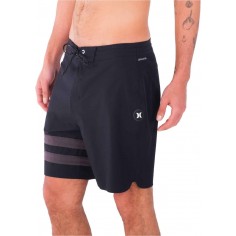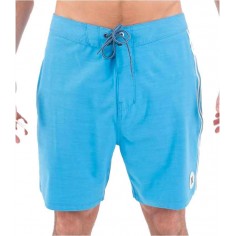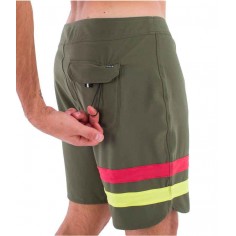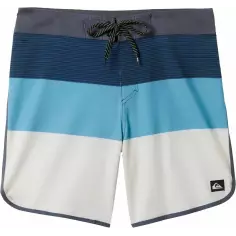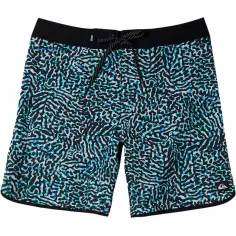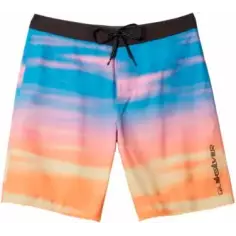Surfing and bodyboarding are different disciplines, although they share some similarities.
Hence, there is some controversy about which one to choose, especially when you want to start catching waves.
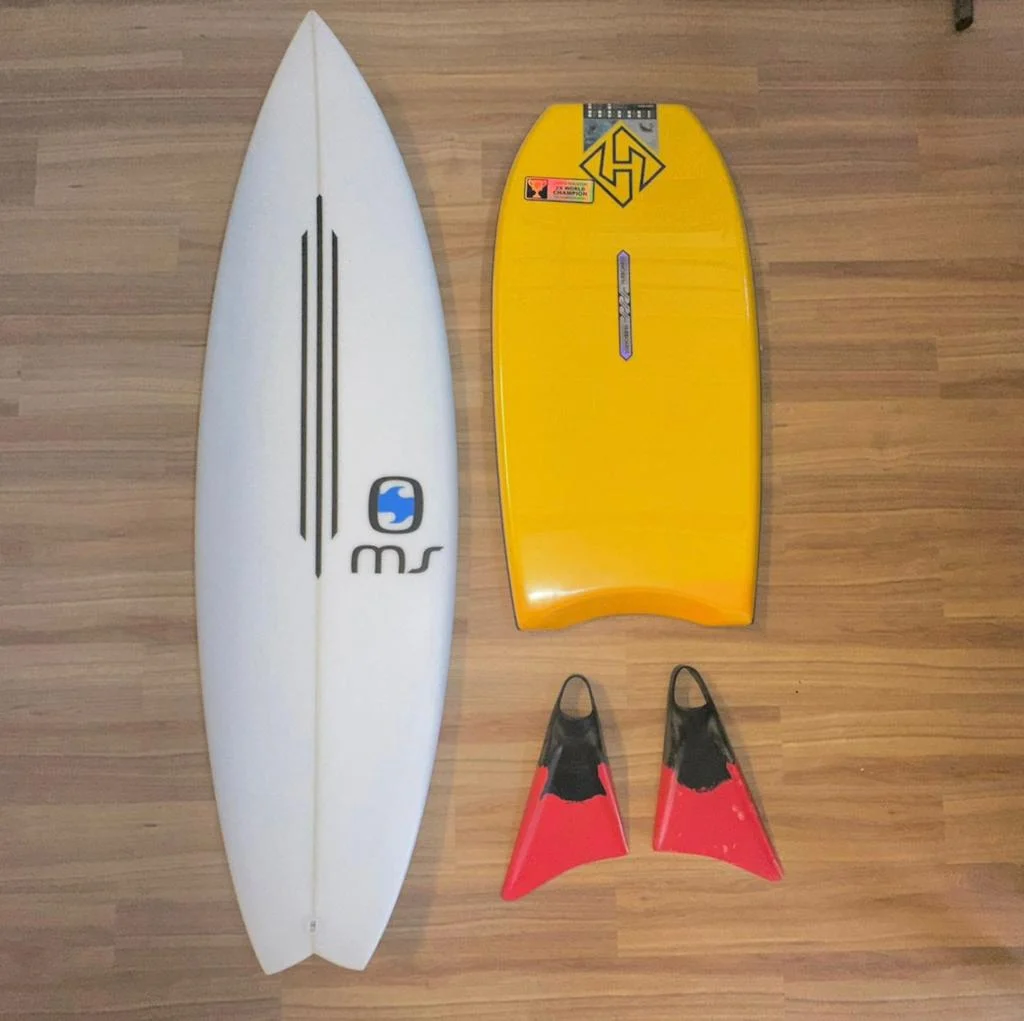
Surfboard and bodyboard
Similarities and differences between surfing and bodyboarding
Superficially, it may seem that surfing and bodyboarding are the same. In reality, both involve catching waves on a board, performing maneuvers, and making tubes.
As a result, adrenaline, excitement, and fun are guaranteed in both disciplines. Of course, the connection with the water is maximum, and the physical wear is compensated with the emotional rush you experience.
In addition, bodyboarding and surfing are really addictive sports: when you try them and start enjoying them, they hook you forever.
Anyway, to be clear about why to do bodyboarding or surfing, you need to know their differences.
This is surfing
It is the most popular, ancient, and most practiced discipline of catching waves. Its objective is to stay on the board while pumping the wave to gain speed and make turns and tubes. It ensures fun throughout the process, even when you still don't master the art of taking off or standing up on a surfboard.
The key to standing up lies in placing your body weight correctly on the board, distributing it as needed to gain speed, catch a wall, or make a turn.
All this to direct the board where you need it at each moment. All this requires a high physical effort, not only because of the tension and difficulty of doing all this on a wave, but also because it requires reaching the place where the waves break, the peak, which is usually very demanding depending on where each wave breaks.
To catch waves while surfing, you need to have a good surfboard. Additionally, it is important to have a wetsuit that will protect you from the cold and frequent bumps, scratches, and wounds. It is common to hit the rocks, the bottom, and thefins of the surfboard.
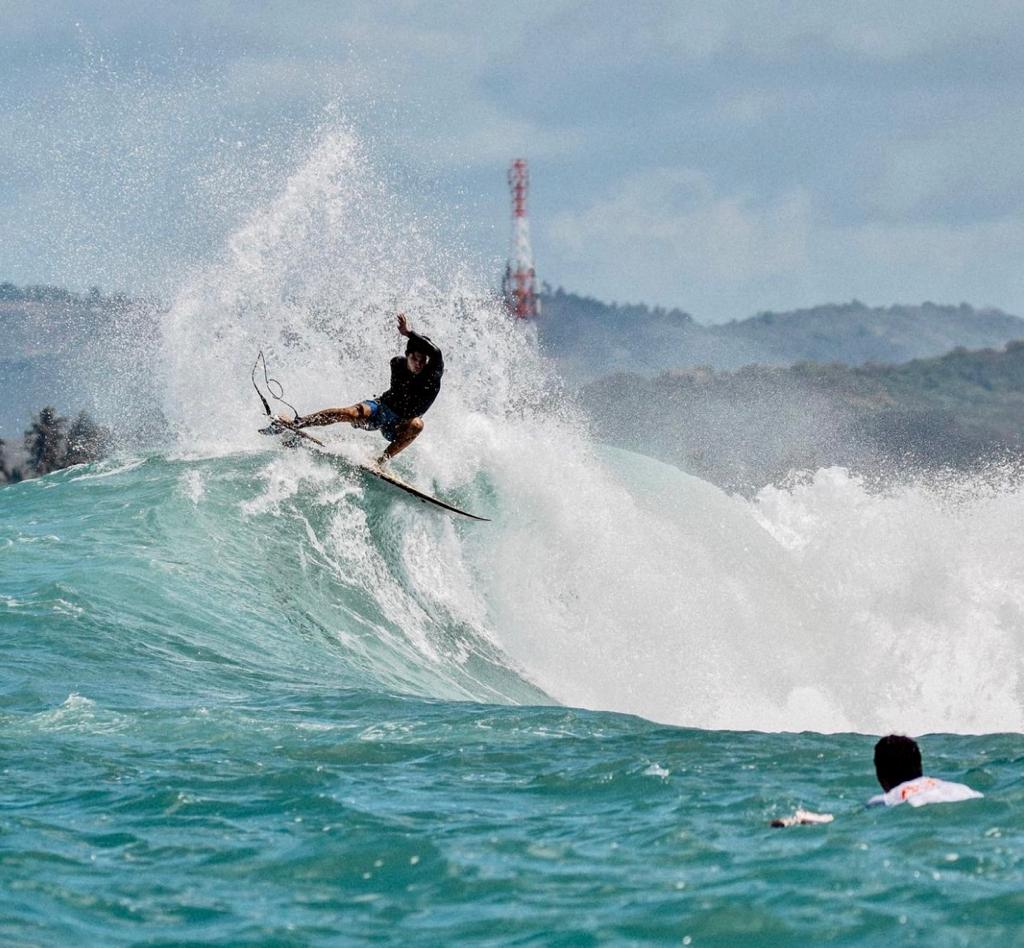
Surfer making a turn
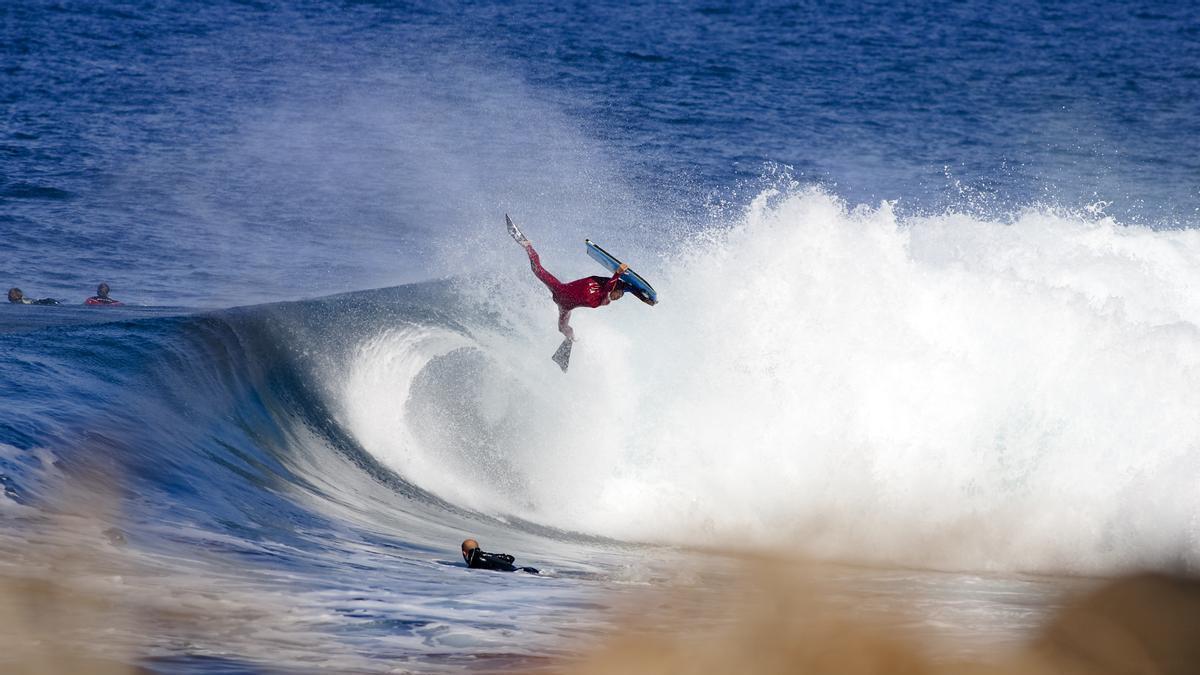
Bodyboarder making an aerial
This is bodyboarding
Obviously, as we have said, you will also catch waves when practicing bodyboarding. However, you will use smaller and more flexible boards than in surfing. They lack fins since it is their edges that fix them to the wall of the wave. In general, they are made of foam of different densities.
Do you know what the main difference between surfing and bodyboarding is? In this second modality, you lie face down on the board. Consequently, your upper body assumes the greatest prominence when surfing. In contrast, in surfing, it is mainly your legs that determine balance.
Another differential feature between the two options is that bodyboarding is ideally done with waves with a larger lip and more vertical in search of an aerial.
The origin of this sport, popularly known as boogie, is in Hawaii. When Captain Cook arrived in the area in 1780 and wrote his logbook, he mentioned the natives surfing waves like this.
Today, Tom Morey is considered the godfather of bodyboarding. When he caught a wave with his surfboard but broke it in half, he had to finish it lying on what was left of it.
If you have never catched waves, is it better to surf or bodyboard?
This decision can be crucial for your development. We have just seen why doing bodyboarding and surfing is not the same. The question now is to decide which one beginners should start with.
The first idea is that neither of the modalities is better than the other. Despite the eternal dispute among surfers and bodyboarders over which discipline demands more in the water. Don't let that influence you. In practice, they are two parallel paths to enjoy the sea, catch waves, have fun, and enjoy contact with nature. Your experiences, emotions, and experiences will be absolutely memorable!
It is true, however, that bodyboarding is usually easier to master at the beginning of the learning process. This is a good answer to the question: why do bodyboarding? As you progress faster, it is more difficult to throw in the towel and give up on the spot. Therefore, if determination and constancy are not your strong points, keep it in mind.
After analyzing why to do bodyboarding and what the differences are between surfing and bodyboarding, what is the conclusion? Basically, it is a decision conditioned by your personal style, the type of waves you have access to, depending on what sport is better. The best advice for beginners is to contact a qualified instructor; their recommendations will help you decide better. In addition, they will teach you to recognize a rip current and what to do if you lose your board, among other tips and guidelines. Finally, remember that having suitable surfing and bodyboarding equipment to catch waves is crucial.
Products you may be interested in:
Surf y bodyboard son disciplinas diferentes, aunque guardan algunas similitudes.
Por eso, existe una cierta controversia sobre cuál de ellas escoger. Especialmente, cuando quieres iniciarte en coger olas.
Los no iniciados, a menudo, desconocen la existencia de ambas variantes y las diferencias entre surf y bodyboard.
Por eso, vamos a dedicar este artículo a mostrar sus características y por qué hacer bodyboard o surf según las circunstancias.
.jpeg)
Surf / Bodyboard

Tabla de Surf y tabla de Bodyboard
Similitudes y diferencias del surf y el bodyboard
De manera superficial, puede parecer que el surf y el bodyboard son lo mismo. En realidad, ambos consisten en coger olas sobre una tabla, realizar maniobras y hacer tubos.
En consecuencia, la adrenalina, la emoción y la diversión están garantizadas en las dos disciplinas. Por supuesto, la conexión con el agua es máxima y el desgaste físico se compensa con el subidón emocional que experimentas.
Además, bodyboard y surf son deportes realmente adictivos: cuando lo pruebas y empiezas a disfrutar, te enganchan para siempre.
Sea como sea, para que llegar a tener claro por qué hacer bodyboard o surf, necesitas conocer sus diferencias.
Así es el surf
Es la disciplina de coger olas más popular, antigua y la más practicada. Su objetivo es mantenerse en pie en la tabla mientras se bombea la ola para coger velocidad y hacer giros y tubos. Asegura diversión durante todo el proceso, incluso cuando todavía no dominas el arte de hacer el take off o puesta en pie en una tabla de surf.
La clave de la puesta en pie radica en colocar correctamente el peso de tu cuerpo sobre la tabla distribuyéndolo según necesites ganar velocidad, coger una pared o realizar un giro. Todo esto para ir dirigiendo la tabla donde vayas necesitando en cada momento. Todo esto exige un esfuerzo físico alto, no solo por la tensión y la dificultad que requiere realizar todo esto sobre una ola. También porque exige llegar hasta el lugar en el que rompen las olas, el pico, lo cual suele ser muy exigente según donde rompa cada ola.
Para coger olas haciendo surf necesitas tener una buena tabla de surf. Además, es importante tener un traje de neopreno que te protegerá del frío y de los frecuentes golpes, arañazos y heridas. Es habitual golpearse con las rocas, el fondo y las quillas de la tabla de surf .

Surfista realizando un giro

Bodyboarder realizando un aéreo
Esto es el bodyboard
Evidentemente, ya lo hemos dicho, también vas a coger olas al practicar bodyboard. Sin embargo, vas a utilizar unas
tablas más pequeñas y flexibles que en el surf. Carecen de quillas, ya que son sus cantos los que las fijan a la pared de la ola. En general, están hechas en espuma de diferentes densidades.
¿Sabes cuál es la principal diferencia entre surf y bodyboard? En esta segunda modalidad, te colocas tumbado boca abajo sobre la tabla. En consecuencia, es tu tren superior el que asume el mayor protagonismo a la hora de surfear. Por su parte, en el surf son tus piernas las que determinan principalmente el equilibrio.
Otro rasgo diferencial entre las dos opciones es que el bodyboard se realiza idealmente con olas de mayor labio y más verticales en busca de un aéreo.
El origen de este deporte, popularmente conocido como bugui , se encuentra en Hawái. Cuando el Capitán Cook, allá por 1780, redactó su cuaderno de bitácora al llegar a la zona, mencionó a los nativos surfeando olas así.
En la actualidad, Tom Morey se considera el padrino del bodyboard. Cuando bajó una ola con su tabla de surf, pero al partirla por la mitad, tuvo que terminarla tumbado sobre lo que quedaba de ella.
Si nunca has cogido olas, ¿mejor surf o bodyboard?
Esta decisión puede resultar trascendental para tu desarrollo. Acabamos de ver por qué hacer bodyboard y surf no es lo mismo. La cuestión ahora es decidir con cuál han de iniciarse los neófitos.
La primera idea es que ninguna de las modalidades es mejor que la otra. Y eso que existe entre los surfistas y bodyboardes una eternidad pelea de qué disciplina exige más en el agua. No te dejes influir por ello. En la práctica, son dos caminos paralelos para gozar en el mar, coger olas, pasarlo bien y disfrutar en contacto con la naturaleza. ¡Tus experiencias, emociones y vivencias serán absolutamente memorables!
Sí es cierto, no obstante, que el bugui suele ser más fácil de dominar al principio del aprendizaje. Esta es una buena respuesta a la pregunta: ¿por qué hacer bodyboard? Como avanzas más rápido, es más difícil que arrojes la toalla y abandones sobre la marcha. Por ello, si la determinación y la constancia no son tus fuertes, tenlo presente.
Tras analizar por qué hacer bodyboard y cuáles son las diferencias entre surf y bodyboard, ¿cuál es la conclusión? Básicamente, que se trata de una decisión condicionada por tu estilo personal, el tipo de olas a los que tengas acceso según vengan mejor para un deporte u otro. El mejor consejo para novatos es contactar con un monitor cualificado; sus recomendaciones te ayudarán a decidir mejor. Además, te enseñará a reconocer una corriente de resaca y qué debes hacer si pierdes la tabla, entre otros consejos y pautas. Por último, recuerda que tener un material adecuado de surf y bodyboard para coger olas es determinante.
Productos que te podrían interesar:

Ignacio
Ignacio is the bodyboarding expert at Mundo-Surf, with a competitive track record at the national and European levels that makes him a reference in the sport. Passionate about the sea and waves, Ignacio lives and breathes bodyboarding, bringing with him a unique blend of technique, passion, and knowledge.
In addition to his competitive experience, Ignacio has a solid background as a surf instructor, allowing him to pass on his love for the ocean and shape new generations of surfers and bodyboarders. On the Mundo-Surf blog, he shares not only advanced tips and techniques but also the philosophy that inspires him in every wave.




